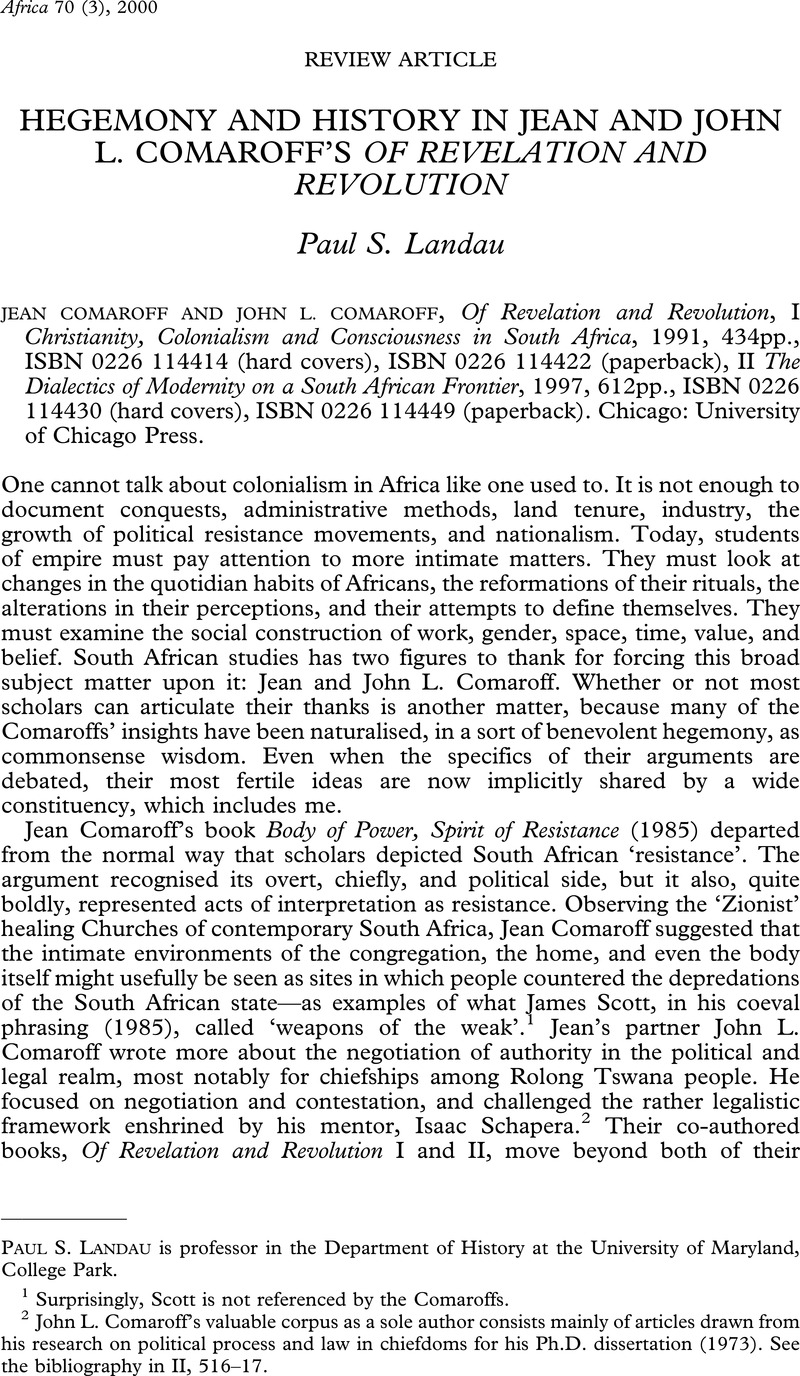Crossref Citations
This article has been cited by the following publications. This list is generated based on data provided by Crossref.
Hofmeyr, Isabel
2004.
Review article.
African Studies,
Vol. 63,
Issue. 1,
p.
119.
Robbins, Joel
2007.
Continuity Thinking and the Problem of Christian Culture.
Current Anthropology,
Vol. 48,
Issue. 1,
p.
5.
Prevost, Elizabeth
2009.
Assessing Women, Gender, and Empire in Britain's Nineteenth‐Century Protestant Missionary Movement.
History Compass,
Vol. 7,
Issue. 3,
p.
765.
Denis, Philippe
2018.
On Reading Gerald West's The Stolen Bible.
Religious Studies Review,
Vol. 44,
Issue. 2,
p.
155.
Niezen, Ronald
2018.
The International Encyclopedia of Anthropology.
p.
1.
Barnes, Andrew E.
2018.
The Palgrave Handbook of African Colonial and Postcolonial History.
p.
239.
Killingray, David
2024.
The Palgrave Handbook of Christianity in Africa from Apostolic Times to the Present.
p.
221.





